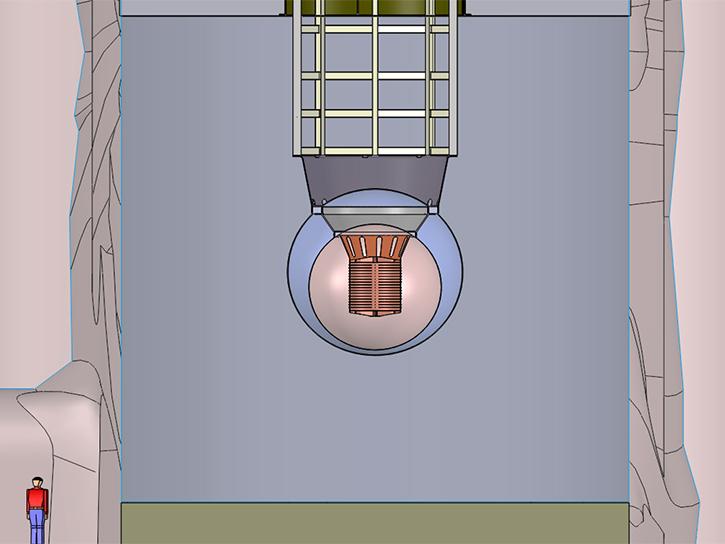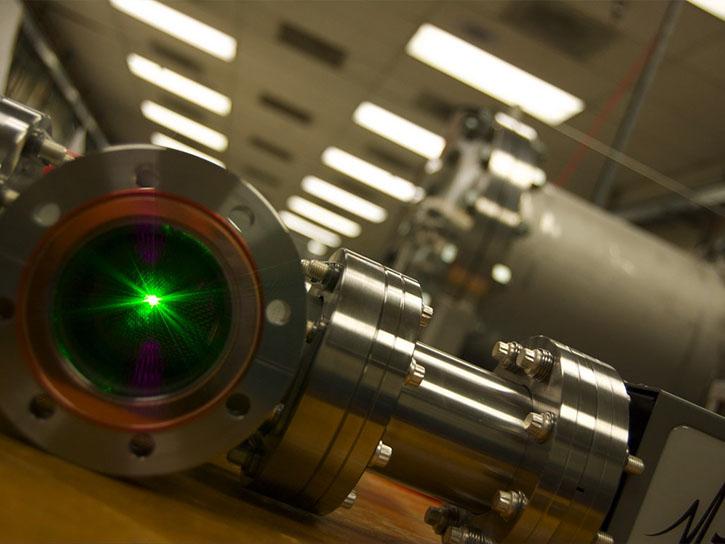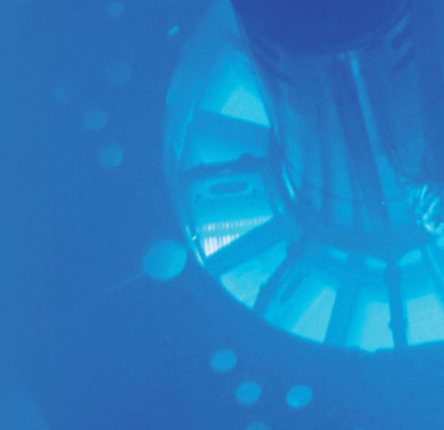LLNL’s unique combination of capabilities, expertise, and relationships provides leadership and collaboration opportunities in flagship neutrino physics experiments. LLNL either leads or plays an important role in the experiments described below.
The Antineutrino
Antineutrinos are emitted by nuclear reactors (among many other natural and artificial sources). As a national security laboratory, LLNL has pioneered what has become a global effort in applied antineutrino physics—exploring antineutrino applications by monitoring nuclear reactors and spent fuel in nonproliferation contexts.
Nuclear reactors, as the birthplace of the world’s plutonium, are of interest from a nonproliferation and national security perspective, and inextricably related to the production and source of antineutrinos in mass quantities. By measuring the rate and energy spectrum of antineutrinos emitted by reactors, the fissile content, operational status, and power level of the reactor can be monitored in near-real-time.
LLNL has a long history of developing technology and using concepts for applied antineutrino physics. A series of experiments performed by Lawrence Livermore and Sandia National Laboratories confirmed that it was possible to extract information about the fissile content of reactor cores with detectors of simple design.
Current efforts include developing technologies to increase sensitivity and/or broaden the utility of antineutrino-based systems, for example:
- Developing detectors that can operate on the Earth’s surface without cosmic ray attenuation
- Inventing solid state materials to facilitate mobility, user acceptance, and new detector concepts
- Investigating large detectors to permit operation at greater standoff distances
- Developing ultra-low threshold detectors to access a higher cross section of neutrino interactions known as coherent scatter
- Working to better understand the practicality of antineutrino detection for end users
Projects

nEXO
Unique expertise in time-projection chamber technology has enabled LLNL to assume a leading role in the nEXO collaboration, which plans to field a ton-scale time-projection chamber detector wherein xenon-136 serves both as the decay source and detector. When nEXO is ready to deploy, it will be the largest collection of xenon-136 atoms on earth and will be more sensitive to neutrinoless double beta decay than any other experiment.
Learn more about nEXO >>
Project 8
LLNL is a founding member of the Project 8 collaboration, an experiment to directly measure the mass of the neutrino using cyclotron radiation emission spectroscopy (CRES). Project 8 plans to use atomic tritium to accomplish this goal, and LLNL is at the forefront of research in the production, purification, and cooling of the atomic tritium supply.
Learn more about Project 8>>


PROSPECT
LLNL is a founding member of the PROSPECT collaboration and the lead laboratory for the deployment and operation of the PROSPECT detector at the Oak Ridge High Flux Reactor. This experiment seeks to determine whether a new type of neutrino exists and to measure the flux of reactor antineutrinos with unprecedented accuracy.
Learn more about PROSPECT >>






